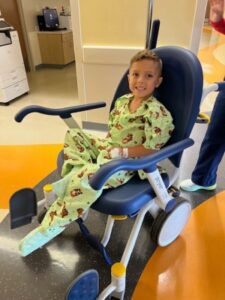Awo Onwudiwe
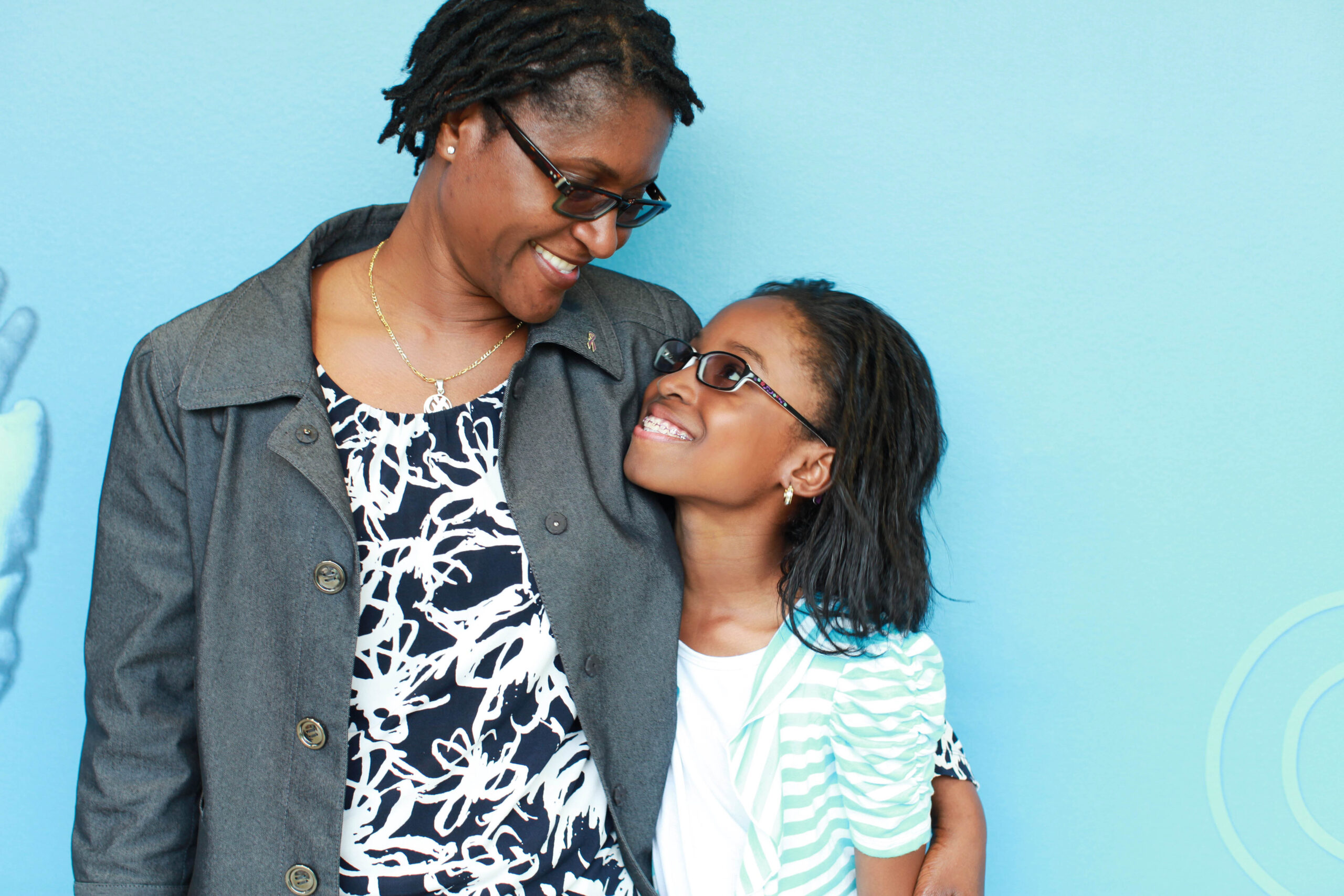
sickle cell patient cured after bone marrow transplant
- patient name: Awo Onwudiwe
- patient age: 24
- condition: sickle cell disease
- seen in: hematology/oncology
- providers: Mukund Dole, MD
Awo spent the first 22 years of her life managing sickle cell disease; from the physical struggles of pain crises and hospital visits to the emotional ones – the impact on her schoolwork, social life and mental health. In 2023, that all changed. Today, Awo is cured of sickle cell disease!
about sickle cell disease
Awo was born with sickle cell disease, and has been seen by Mukund Dole, MD in the hematology/oncology division at Dayton Children’s Hospital since then. Sickle cell disease is a lifelong genetic disease that affects the red blood cells. Typically, red blood cells are oval-shaped but in individuals with sickle cell disease, the red blood cells become “sickled” in shape like a crescent moon. This can cause the cells to become stuck in small blood vessels. Individuals can experience pain and anemia and are at increased risk for strokes, organ damage, infections, and other serious health problems.
growing up with sickle cell
When Awo was little, she would know she was in pain but didn’t understand why. “I was the only one in my direct family with the disease, and didn’t have anyone in my circle that had it and could relate to it,” Awo said.
Awo couldn’t do the same things as her friends, or would have to do things differently because of sickle cell. Pain crises can be triggered by weather or overexertion, so she couldn’t play outside when it was really cold, or had to sit on the side when playing sports so she didn’t push too hard.
“It felt a little lonely – I didn’t understand why everyone else could do those things, but I couldn’t and had to be extra careful,” Awo remembers.
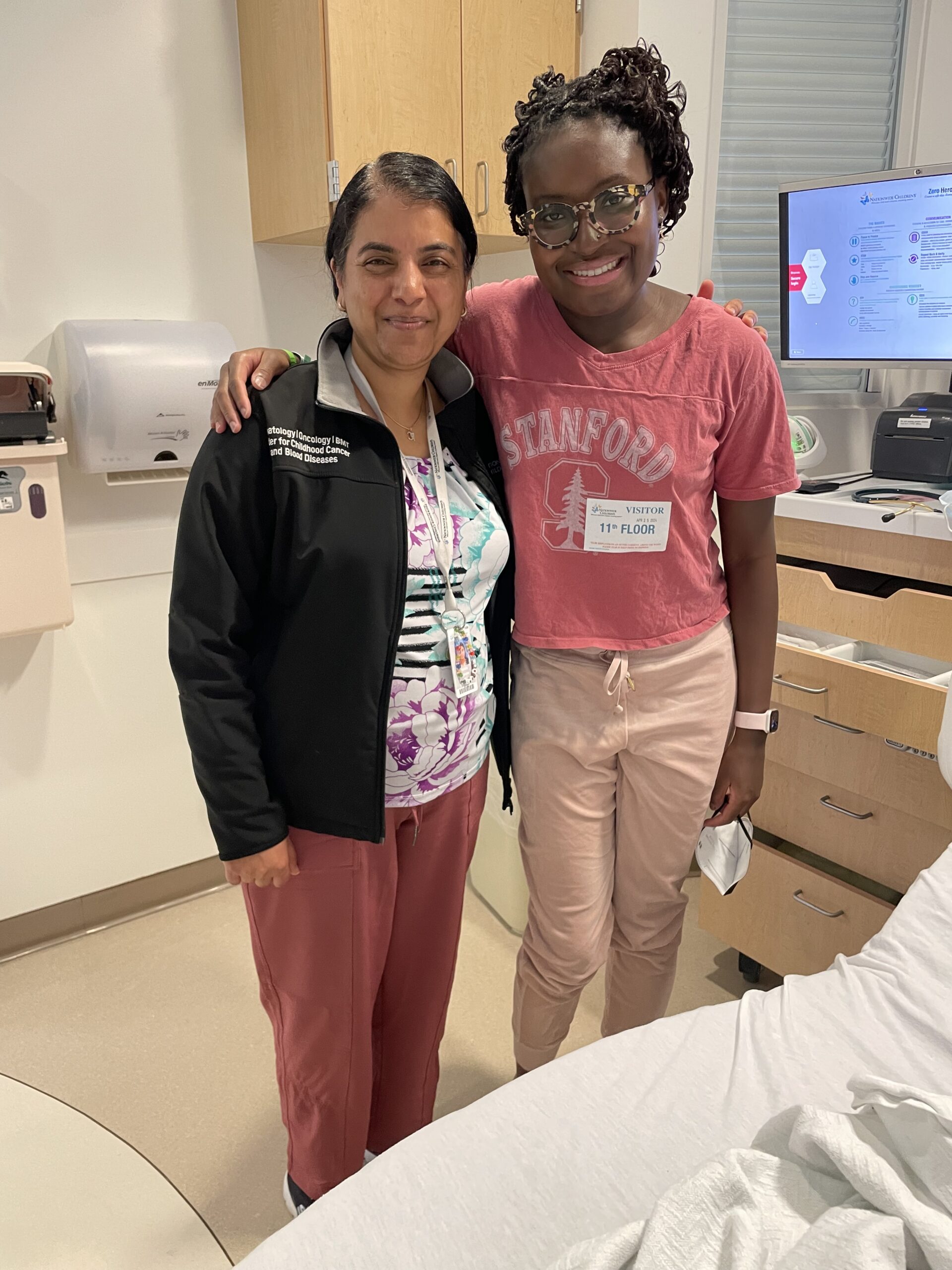
managing escalating crises
Sickle cell crises can ebb and flow. Growing up, Awo took many daily medications to manage her disease and would occasionally have severe symptoms that would lead to her being admitted to Dayton Children’s.
One of Awo’s more common reasons for a hospital stay was for acute chest syndrome. This is a sickle cell attack in the chest that creates pneumonia-like symptoms. Awo would get breathing treatments and medicine to manage her pain. As she got older and into college, these attacks and hospital visits became less frequent but harder to recover from. In some ways, the stakes also got higher.
“When I had attacks in college, I would get really behind on my homework and projects,” Awo said. “Also, once I got to college, I had to be more proactive about sickle cell and get forms from the disability office, talk to my professors about accommodations. Every semester I had to tell new people what was going on. I was always nervous to do so.”
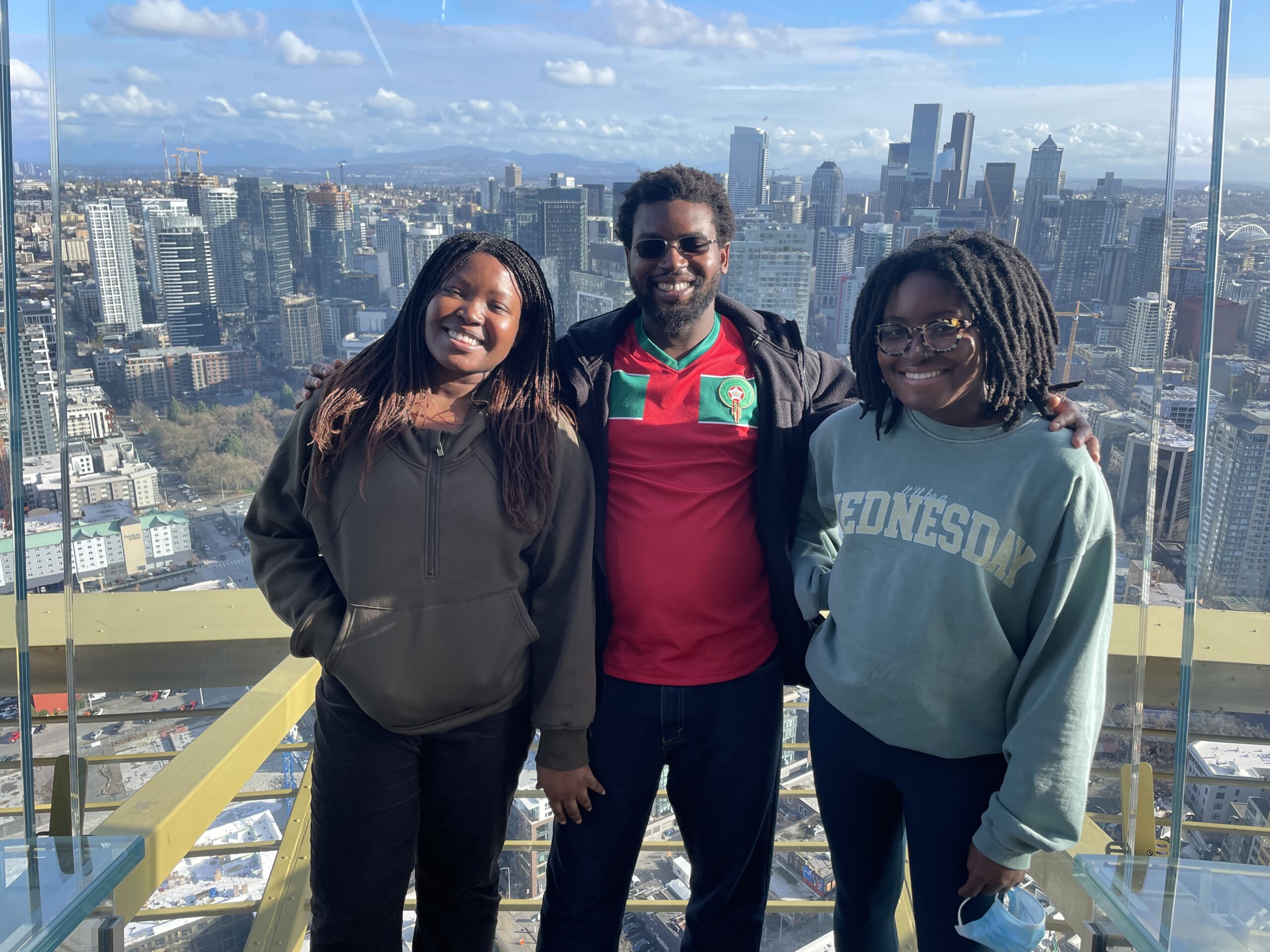
a new option: bone marrow transplant
As Awo’s attacks started to become more severe, she and her family started to look for new treatment options. Awo’s mom, Mamle Anim, MD, a doctor herself who treats adult patients with sickle cell, was able to be more tuned into the latest treatment developments.
At a conference in 2022, Mamle heard a presentation on cellular therapy, including bone marrow transplants and gene therapy. She noted how much it has changed, how more people with conditions besides cancer can benefit from the therapy, and that the side effects aren’t as extreme as they used to be.
Working with Dr. Dole, Awo, Mamle and their family looked at the benefits and risks of Awo undergoing a transplant compared to continuing their current path.
“I saw adults [with sickle cell] and the path that Awo was going in. It was not a good path, and I was so worried. I wanted her to live a good life, go to law school. If there’s another way for her to live that life, let’s try it, because this way is so unpredictable. As you get older too, you have more responsibilities and the disease is even more disruptive and harsh,” Mamle shared.
deciding on a transplant at Nationwide Children’s Hospital
They decided the bone marrow transplant was the right next step. Dr. Dole referred Awo to the cellular therapy program, a collaboration between Nationwide Children’s Hospital and Dayton Children’s.
This one program, two campus approach allows Dayton-area families to stay close to home for most of their care, while receiving expert transplant care from Nationwide Children’s, one of the top ten children’s cancer hospitals in the country. Nurse coordinators and hematology/oncology providers on both teams work with and support families through the whole process to help them navigate the journey.
connecting with Nationwide Children’s
After Awo was referred, Jani Rice, BSN, RN, CPON, the bone marrow transplant coordinator at Dayton Children’s, worked with the Nationwide Children’s team and Awo to get her all set up at Nationwide Children’s. The team at Nationwide Children’s, including Hemalatha Geetharani Rangarajan, MD, called and did an assessment and went over the process.
“It was really important to Dr. Hema [Rangarajan] that you know what the process would be like and that you still wanted to do it and are committed to it. It’s a very intensive process, and you have to show up,” Mamle said.
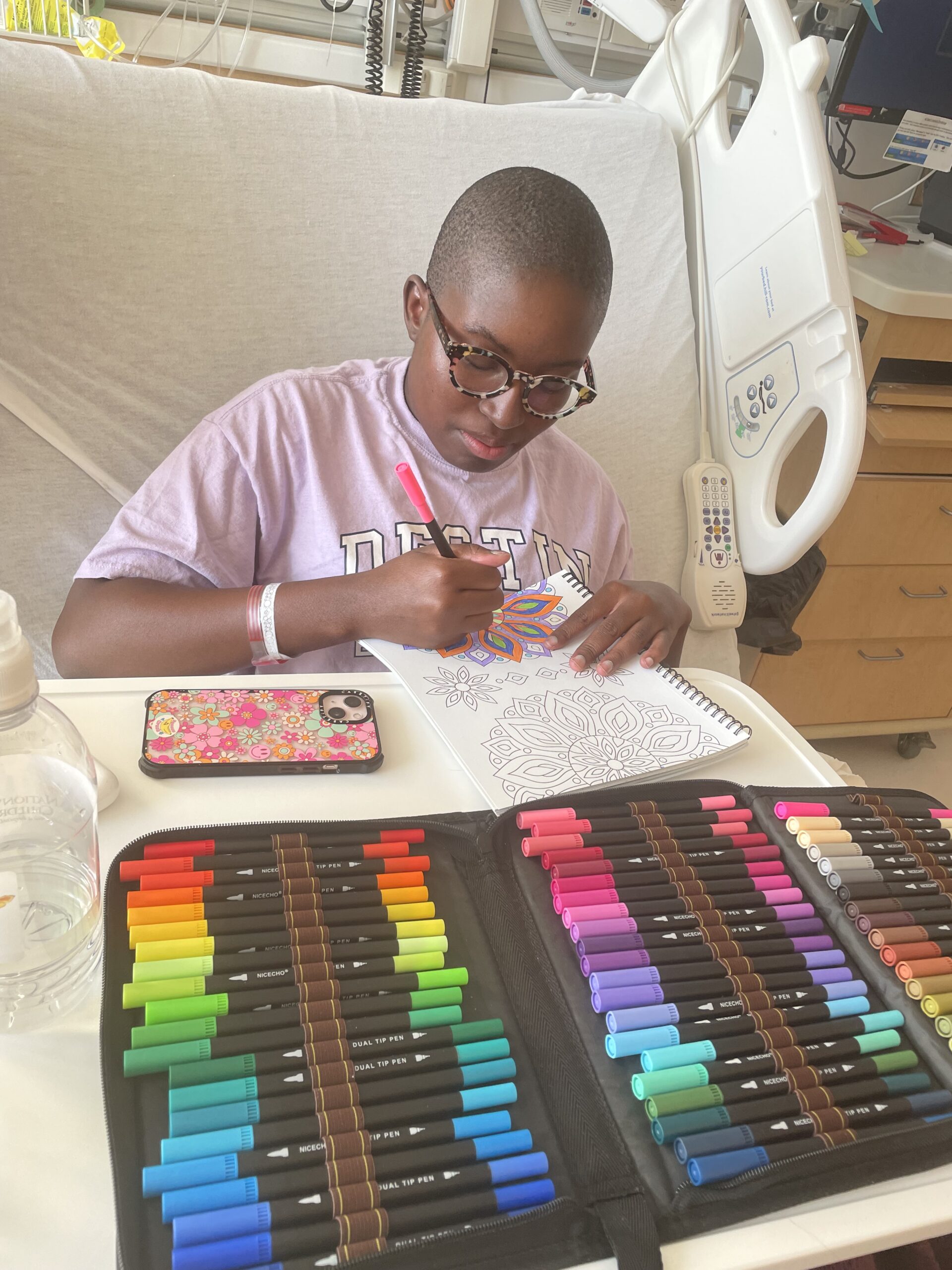
preparing for the transplant
The final step to fully decide on the transplant was to test Awo’s family to see if they would be a donor match. Her brother, Memme, was the best match. Awo shared, “He was really excited and up to it and, even before we got the results, he was confident it would be him who could be the match!”
Once they had the donor match, Awo underwent a series of tests to make sure her body was ready for the transplant. She was able to stay at Dayton Children’s for most testing, and then went to Nationwide Children’s once they were ready to start preparing for the transplant itself.
Awo was admitted on April 16, 2023. In the first two weeks, she got a port, went through a round of chemotherapy, got a radiation treatment, and did more testing. In the meantime, Memme underwent his procedure to retrieve his bone marrow. Then, it was time for the transplant.
post-transplant care
After the transplant, Awo spent another month at Nationwide Children’s while she was monitored for blood counts and side effects from the treatment and started her recovery.
Patients who undergo transplants are immunocompromised, meaning their body isn’t as capable of fighting off illnesses. Awo was on a lot of medications for that and for other side effects from the transplant.
Awo lost her appetite and had some pain, but she is grateful that most of her symptoms were relatively mild. Mamle would come and spend the night at the hospital every night to keep Awo company, but Awo’s days were spent mostly alone sleeping or doing crafts. She tried reading, knitting and coloring when she had the energy, but mostly she rested.
the best birthday gift
After about a month, Awo was discharged but stayed at the Ronald McDonald House by Nationwide Children’s for continued close monitoring by Dr. Rangarajan. Finally, on May 27, Awo’s 23 birthday, she was able to go home! However, Awo’s transplant care did not end there.
Awo was on many medications to help support her immune system, and for the first six months after treatment she had to stay home to protect herself from any germs. She also had to be careful about what food and drinks she had, all to keep her immune system in top shape. Awo also regularly went to appointments at Nationwide Children’s where Dr. Hema monitored her levels and made sure her body was doing ok handling the transplant and its effects.
“if you decide to do this for your child, you need to be a champion for them. They need someone who will be by their side through thick and thin for whatever they need,” Mamle shared. “The process can be very isolating and depressing at times. You need someone to cheer you up and carry some of the weight. We were blessed that Awo’s journey wasn’t as harsh as it could have been, but it was still a tough process.”
sickle cell free!
Now, Awo is cured of sickle cell disease! Over the past year, she has continued to have regular appointments with her care teams from Nationwide Children’s and Dayton Children’s, who work in step to make sure everything is going according to plan. She also had a very strict treatment plan.
Awo shared, “I had to be really on top of my medications and post-transplant care, especially after I was discharged. It’s a lot of work and pretty difficult to make sure I’m all caught up. It would be really difficult without my mom and family.”

advice for those considering a transplant
This is still a relatively new treatment, so Awo and Mamle recommend doing research and working with your care team to figure out the right option for you. They also highlighted the importance of making sure you have support to stay on top of all the treatment after transplant.
“Especially in the first few months when you’re so tired and can’t go anywhere, I’ve needed my family to be organized and take on the task of taking care of me and my needs,” Awo shared.
Both Awo and Mamle recognize the difficulty of transplant and post-transplant care, and how much support is needed to get through that time. Despite that, Mamle shares “It is a bad disease, it is very inhibiting and can really impact your life. Look at what positive you can get out of this – if you can go through and get cured, go for it. Some patients may not qualify, but it’s worth it to try and see if you do.”
what’s next for Awo?
Awo graduated from the Ohio State University in summer 2022 and is attending law school at the University of Michigan. This is the beginning of a bright future for Awo, and one that is sickle cell free thanks to the innovative treatment, top-notch care and partnership between Dayton Children’s and Nationwide Children’s Hospitals.
share your story
Every patient journey at Dayton Children’s is powerful — from NICU miracles to courageous cancer survivors and beyond. These patient stories not only celebrate our families but also offer hope and encouragement to others facing similar challenges. Share your experience today and help inspire, support, and celebrate the strength of our patients and families.
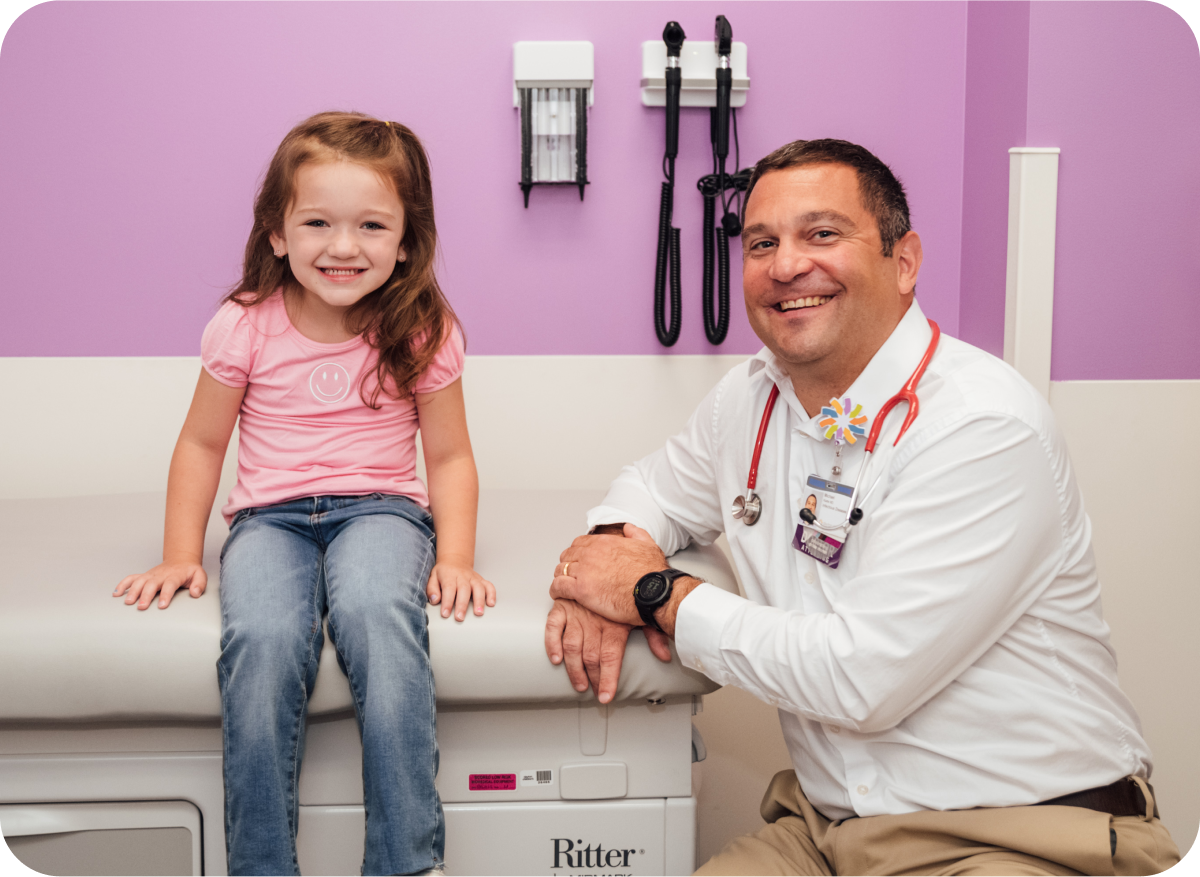
care that goes above and beyond
Because every child deserves care that goes above and beyond, Dayton Children’s provides compassionate, expert care for kids of all ages. Find a provider, schedule an appointment, or learn more about conditions we treat today.


